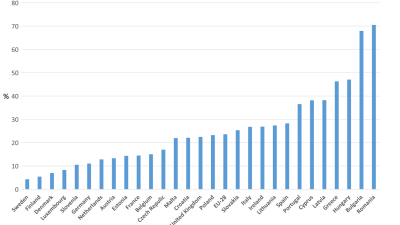The way in which poverty is assessed needs to take into account inequality among those counted as multi-dimensionally poor, according to a new paper from researchers at the Oxford Poverty & Human Development Initiative.
The authors provide two illustrations, using Demographic Health Survey datasets, to demonstrate how an inequality measure adds important information to the 'adjusted headcount ratio' poverty measure.
Key points
- It is only when the dimension of inequality is considered that policy-makers have a real incentive to assist the poorest of those in poverty. This is because the needs of this group can be given a low priority if the aim is to simply to reduce the incidence and/or the intensity of poverty.
- The most common approach to incorporating inequality has been to adjust a poverty measure in such a way that it is sensitive to distributional changes among those in poverty. This approach, however, has certain limitations. The use of a separate inequality measure is suggested, in order to capture inequality among those in poverty and disparity across population sub-groups.
- The inequality measure proposed adds valuable information to the adjusted headcount ratio (used by international organisations and country governments) without sacrificing the ability to understand the contribution of each dimension to overall poverty.
- The inequality measure does not involve any inequality-aversion parameter, whose selection might cause wide disagreement among policy-makers. The additional property therefore allows overall poverty to be decomposed into within-group and between-group components.
- Using the proposed inequality measure alongside the adjusted headcount ratio will enable researchers to identify various patterns of progression of inequality among those in poverty in different countries – and to link these to other patterns such as conflict, migration, and local or regional activities.
Source: Suman Seth and Sabina Alkire, Measuring and Decomposing Inequality among the Multidimensionally Poor Using Ordinal Data: A Counting Approach, Working Paper 68, Oxford Poverty & Human Development Initiative, University of Oxford
Links: Paper



 PSE:UK is a major collaboration between the University of Bristol, Heriot-Watt University, The Open University, Queen's University Belfast, University of Glasgow and the University of York working with the National Centre for Social Research and the Northern Ireland Statistics and Research Agency. ESRC Grant RES-060-25-0052.
PSE:UK is a major collaboration between the University of Bristol, Heriot-Watt University, The Open University, Queen's University Belfast, University of Glasgow and the University of York working with the National Centre for Social Research and the Northern Ireland Statistics and Research Agency. ESRC Grant RES-060-25-0052.






